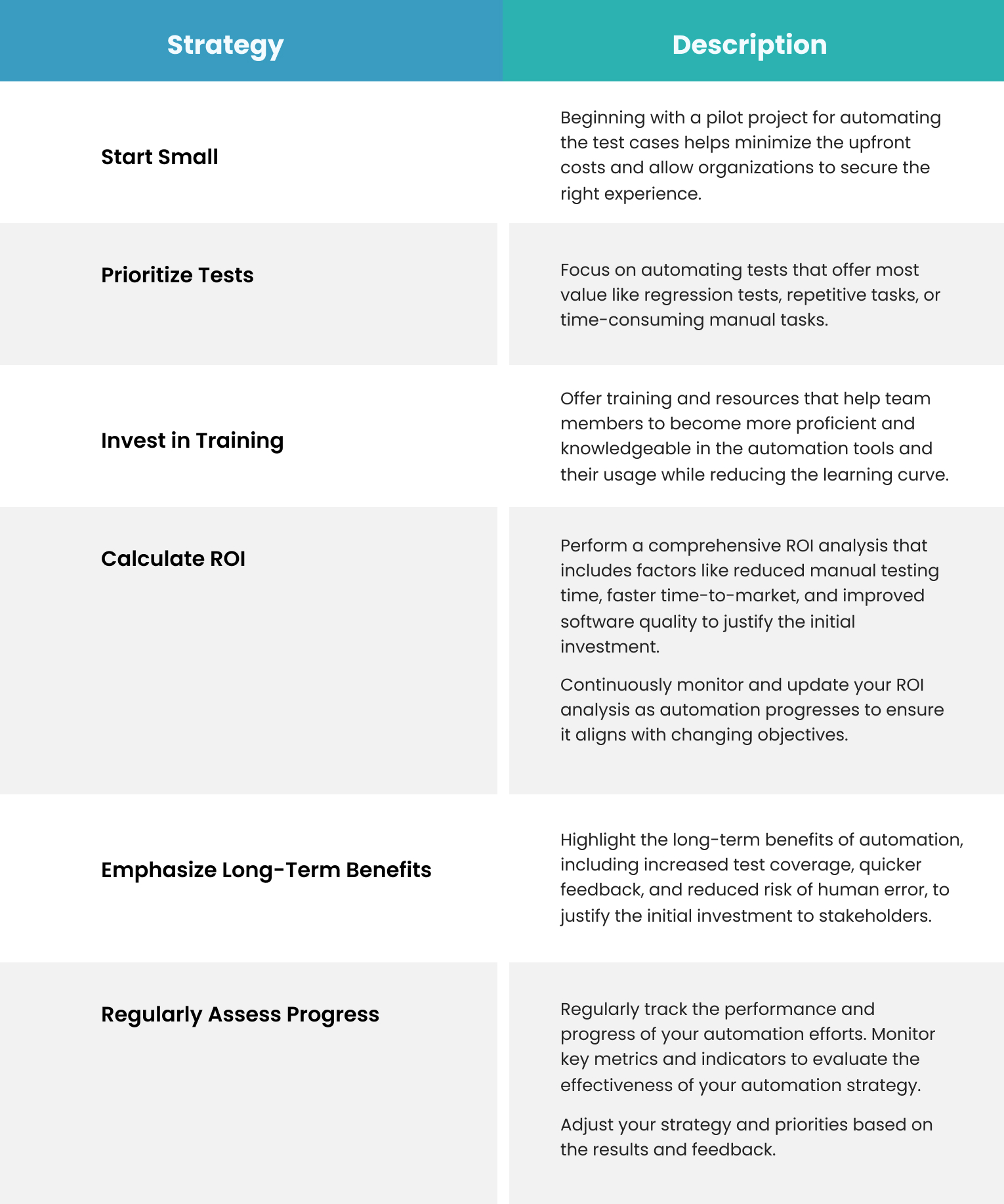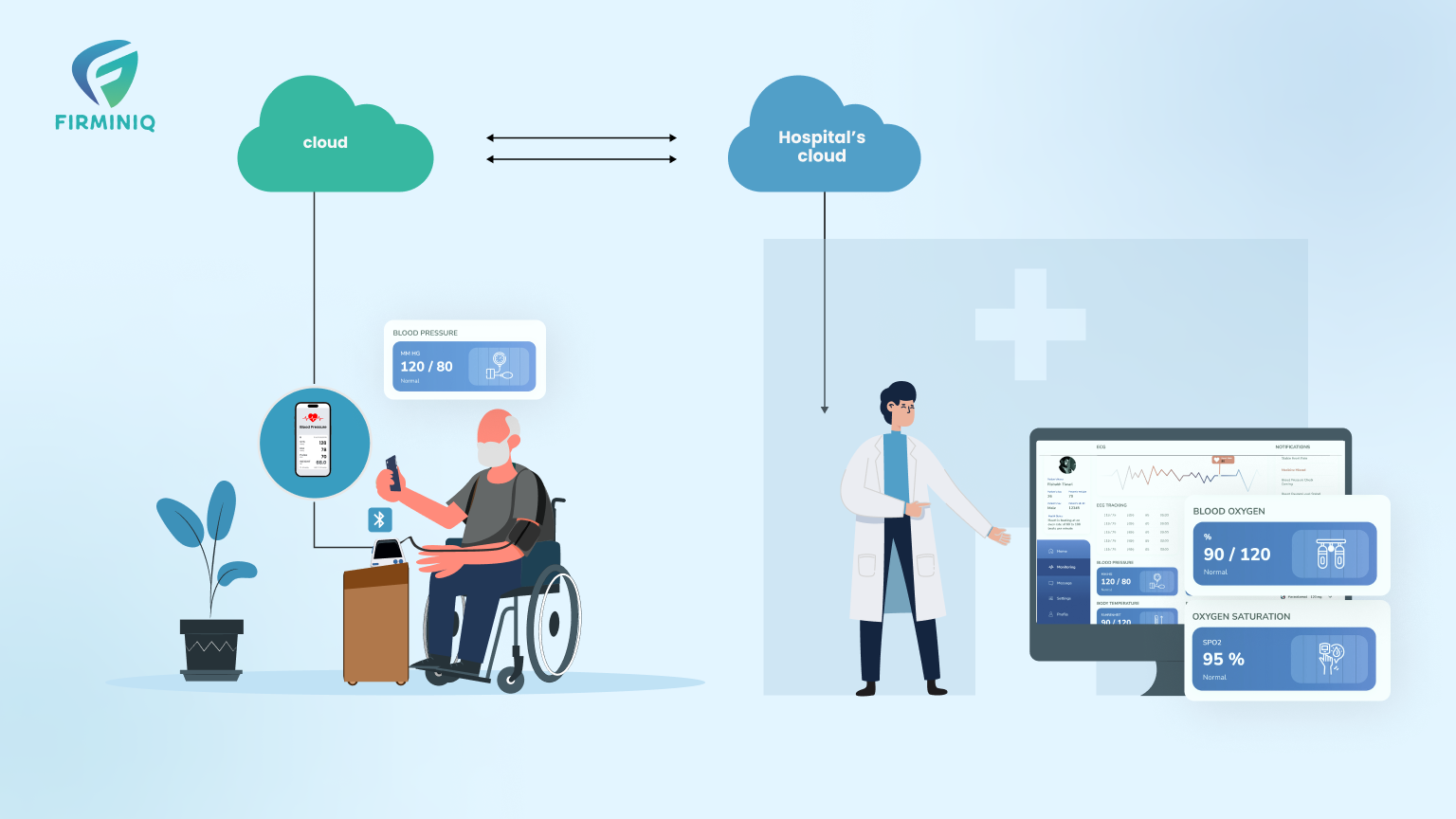The pursuit of quality software delivery has never been more critical in the evolving connected healthcare landscape, and test automation has emerged as one of the most powerful allies. Test automation is a key component to ensure quality delivery with improved speed, reliability, efficiency, and more especially in connected healthcare.
While there is no question about the efficacy of automation, the question that arises is the initial investment and returns on the investment. The acquisition of automation tools, infrastructure, framework, and resources can require a significant upfront financial investment in the beginning. Organizations may be concerned about the initial costs associated with purchasing licenses, hardware, and software.
In this blog, we will delve into the world of test automation in connected healthcare and explore how to strike the right balance between upfront costs, the initial investment dilemma, addressing the dilemma and best practices for calculating and long-term benefits.
The Initial Investment Dilemma
Though automation is one of the most valuable approaches in quality assurance, it comes with a set of constraints and challenges. From a substantial initial investment to encompassing tools, infrastructure, resources, skills, feasibility, and budget – there are different challenges. Furthermore, the maintenance and preservation of test scripts, frameworks, and testing environment is needed to align with the evolving features and reduce the risks.
Therefore, a thoughtful and strategic approach to automation while considering all these challenges is vital for a successful implementation. When organizations consider implementing automation, they may face dilemmas in the decision-making process regarding the initial investment.
From the upfront cost to the efforts for setting up test automation frameworks, here are some of the key aspects of the dilemma.
1. Upfront Costs
Implementing test automation typically involves a cost that comes up while using the automation tools, training employees, and hiring.
Organizations may also need to allocate the budget and resources for expenses, which can be a barrier for companies and organizations with limited resources.
2. Time Investment
Setting up a comprehensive automation framework and writing initial test scripts can be a time-consuming task. It involves designing the structure, defining libraries, and setting up the necessary configurations. The process can take a significant amount of time, especially if it is being built from scratch. It may confuse the teams if the time spent on the automation will pay off overall or not.
3. Testing Framework
Choosing an appropriate automation testing framework is paramount. There are different frameworks available catering to distinct needs. Making a choice between open source, keyword driven, or data-driven frameworks significantly impacts the initial investment.
Our automation testing framework accelerator – QAGo , can help mitigate the challenges associated with framework selection and accelerate automation testing of connected apps.
4. Allocating Resources
To implement test automation, allocating valuable resources is vital. Resource allocation involves dedicating time to set up a team, skilled individuals to design, develop, and maintain automated test scripts and frameworks. Organizations may also need to hire new talent or retrain existing employees, which can affect workforce allocation.
5. Uncertainty of ROI
Another challenge that produces the initial investment is the uncertainty about the Return on Investment (ROI). Organizations may wonder if the implementation of test automation will be substantial enough to justify the initial investments and ongoing costs. This uncertainty might stop some organizations from taking the necessary step and switching to automation.
6. Test Suitability
Not all types of tests are suitable for automation. Deciding which tests to automate and which to keep as manual can be a complex decision and involves accessing factors like stability, volume, and business impact.
7. Maintenance Costs
Ongoing maintenance of test scripts and the automation framework is necessary to keep pace with changes in the application under test. This is a continuous effort that requires dedicated time and resources. Teams need to factor in these maintenance costs when considering the initial investment.
Addressing the Initial Investment Dilemma
Addressing the initial investment dilemma in automation testing is spot on. Here is a summary of these key strategies that help:

The initial investment in automation testing can be a crucial decision for any organization. Careful planning, consideration of ROI, and a gradual approach can help address the dilemma and pave the way for successful test automation implementation.
Calculating ROI
To address these concerns and make a compelling case for automation, it’s essential to consider the returns on the investment. Let us focus on the benefits weighed against the initial investment and ongoing costs, offering a clear and compelling reason for its implementation.
- Cost Savings: Automation can lead to significant cost savings over time by reducing manual testing hours, lowering defect fixing costs, and accelerating time-to-market.
- Revenue Generation: Automation can enable organizations to launch new products or features more quickly, potentially generating additional revenue.
- Risk Mitigation: Emphasize how automation helps mitigate risks, including reduced compliance risks and the avoidance of costly patient data breaches.
Conclusion
Test automation is the backbone that accelerates and ensures quality delivery in connected healthcare. While the initial investment may raise concerns, a well-structured ROI analysis, coupled with thoughtful planning and execution, can pave the way for significant long-term returns.
In the connected healthcare industry, where patient care, data security, and regulatory compliance adherence are paramount, the value of automation extends far beyond cost savings.
Avail yourself of quality assurance services with FIRMINIQ and ensure that every line of code translates to better health outcomes.






